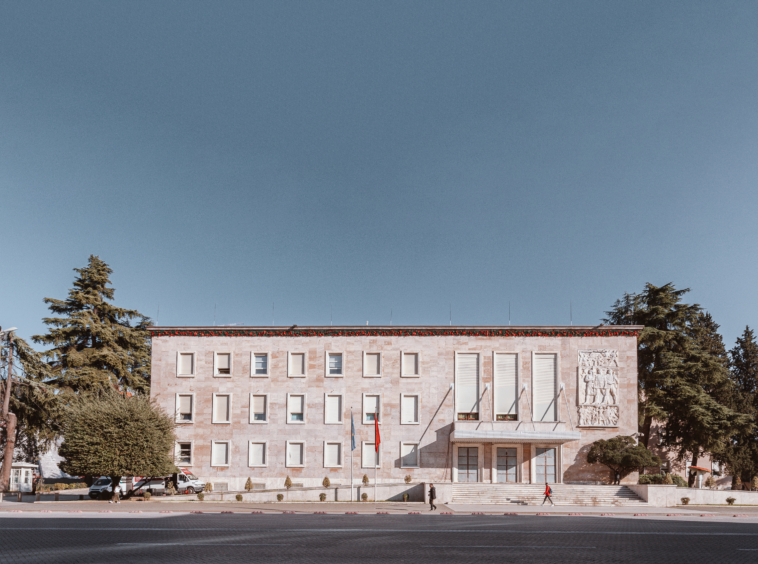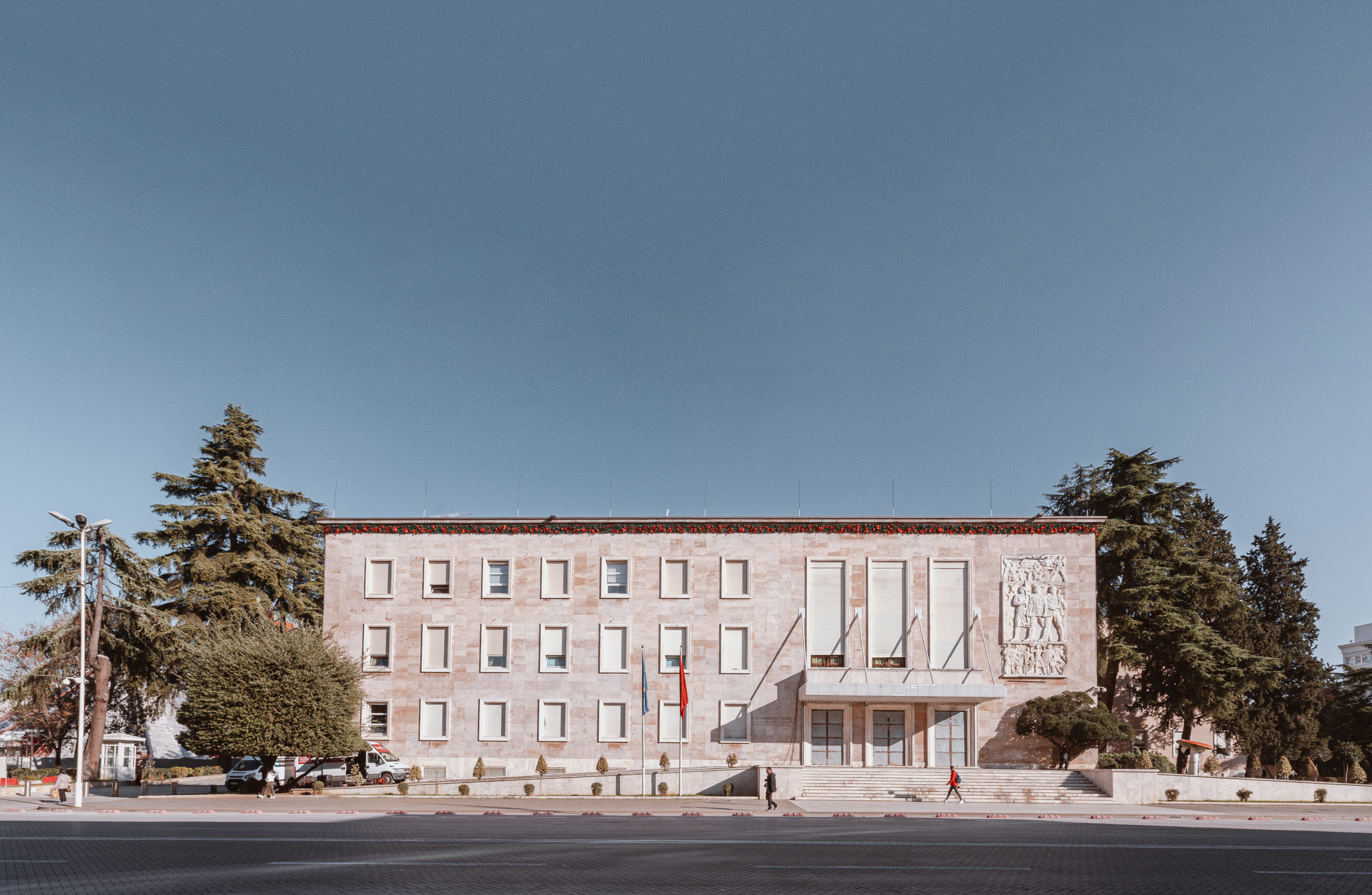Prime Minister’s Office
Details
Updated on December 14, 2024 at 12:23 pmInformation
- Author: Gherardo Bosio, Ferdinando Poggi
- Year Built: 1939-1943
Description
Prime Ministry Building
The Prime Ministry building in Tirana, a prominent architectural and political landmark, was constructed between 1939 and 1943. The building’s design was a collaboration between Italian architects Gherardo Bosio and Ferdinando Poggi, who brought their expertise to Albania during the Italian occupation. It stands as a quintessential example of Italian Rationalist architecture adapted to local needs, seamlessly blending functionality with monumental aesthetics.
Situated on the iconic “Martyrs of the Nation” Boulevard (Bulevardi Dëshmorët e Kombit), the building occupies a pivotal location slightly offset from the main axis of the boulevard. The approach to the structure is marked by a small elevated square, which lends prominence to its entrance. This subtle elevation enhances its symbolic stature as the seat of government.
The Prime Ministry is composed of a central building flanked by wings, with a design that emphasizes hierarchy and purpose. The main front houses reception areas, official meeting rooms, and conference spaces, while the side wings accommodate administrative offices and support services. This thoughtful distribution of volumes reflects the building’s functional requirements and its status as a hub for governance.
Architectural Features
- Main Entrance and Façade
The façade is adorned with tall windows that correspond to the cabinet’s main hall, a space originally designed for the governor (now the Prime Minister). Smaller windows surround the structure, arranged rhythmically to create a balance between grandeur and understated elegance. Trani stone, imported from Italy, was used extensively for the cladding around the main entrance and windows, showcasing a meticulous attention to material quality and detail. - Atrium and Courtyards
In the 1970s, a significant architectural intervention transformed the building, creating two interior courtyards and a central atrium. This central space serves as the heart of the building, featuring corridors that open onto it. Natural lighting and carefully curated works of art create a dynamic interplay within this space, enriching its aesthetic appeal. - Murals and Sculptures
The original design featured murals in the governor’s office and sculptures in the inner atrium, elements that underscored the building’s artistic and cultural aspirations. However, these were removed after World War II due to ideological shifts during Albania’s communist era. Despite these losses, the building retains its historical and artistic significance. - Entrances and Functional Zoning
The building boasts four main entrances, each serving a distinct purpose and oriented toward different sides of the structure. This configuration ensures efficient access and circulation, reflecting a pragmatic approach to design.
Historical Transformations
The building has undergone numerous modifications throughout its history to accommodate changing political regimes and functional needs. In the 1980s, further structural additions altered its original appearance, particularly at the sides and rear. Notably, a bas-relief with motifs from Albanian life, created by sculptors Muntaz Dhrami, Kristaq Rama, Shaban Hadëri, and Hektor Dule, was added to the façade in 1974. This asymmetrical addition juxtaposes historical narrative with the building’s Rationalist symmetry.
In recent years, contemporary interventions have added a modern layer to its historical fabric. One notable addition is the “marquee” on the main façade by French artist Philippe Parreno, incorporating modern materials and artistic expression to bridge the building’s past and present.
Legacy and Symbolism
The Prime Ministry building remains a powerful symbol of governance in Albania. It reflects the nation’s complex political history, from Italian occupation and the communist regime to its contemporary democratic identity. Its architectural design, characterized by simplicity, rationality, and subtle grandeur, continues to command respect and admiration.
Today, the building stands not only as the operational headquarters of the Council of Ministers but also as a cultural and historical landmark, embodying the evolution of Albania’s political and architectural landscapes. It is a living testament to the enduring dialogue between heritage and modernity.







